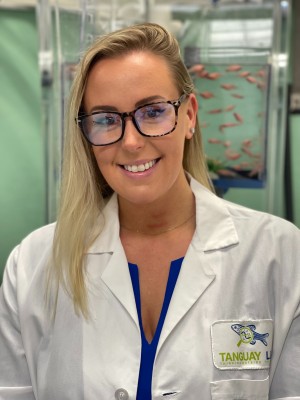Lindsey St Mary

There are approximately 80,000 commercialized chemicals with only about 1% of the chemicals thoroughly tested for toxicity so my project aims to screen and categorize 6,000 distinct chemicals found in the environment, consumer products, or used in manufacturing processes in order to assess phenotypic and transcriptional changes relevant to human disease. Additionally, I am collaborating with AsedaSciences to integrate their high throughput in vitro screening system (SYSTEMETRIC®) and the Tanguay Lab's zebrafish screening assay (ZBEscreen ™) to predict chemical developmental/neurotoxicity.
I enjoy the diversity of research projects and the colaborative environment within the SRP at OSU.
I only hope that any research I am part of leads to not only the research community's understanding of chemical toxicity, but also the public's.
I had originally planned to go to veterinary school, but I had spent my entire undergraduate degree in a toxicology lab where I realized my technical skills could be of use in a research setting. Toxicology became of particular interest due to the multidisciplinarity of the field where it has allowed me to work with biologists, chemists, physicists, engineers etc. from all over the world.
Research
I powerlift, hike with my dogs, and love breaking out in unsolicitied song :)
Research Project(s):